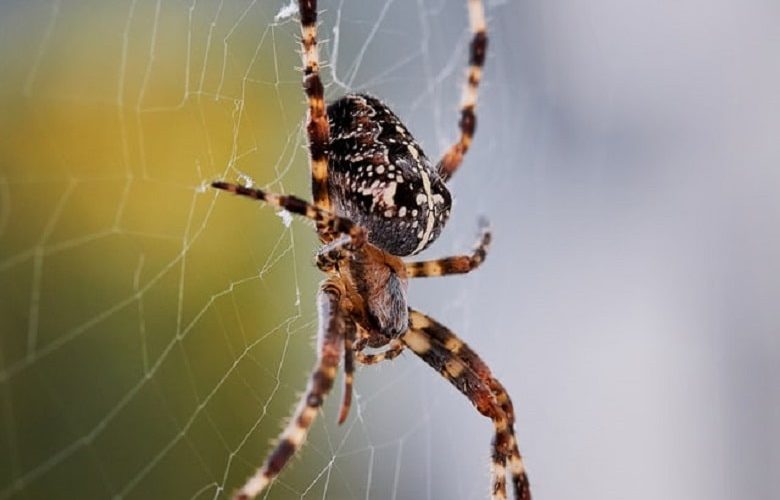While numerous multi-legged animals might share our homes, not every one of them is a bug. Some are gainful on the grounds that they feed on bug creepy crawlies. However, much more so are the “Invisibles”, who live discreetly far away in corners and secret dull spaces in rooms around the house. Do you know, how long do spiders live? Indeed, you may as of now have a few of these “flatmates,” regardless of whether you’ve never seen them. Here are 15 models from a new report that broke down the variety of arthropod life in homes
Book Mite
Booklice (Liposelididae) are little bugs found in numerous living spaces, regularly in creature homes and human homes. They are identified with genuine parasitic lice, yet rather than blood and skin, booklice feed on molds, dead bugs, put away food items, and different bits of natural matter. This individual is slithering on a piece of paper with a 4-point text style.
Camel Cricket
Camel crickets (Raphidophoridae) are by and large occupants of storm cellars and unfinished plumbing spaces where they feed on an assortment of natural matter. Their long radio wires assist with directing them out of the loop, while their long legs permit them to hop significant stretches. Despite the fact that they might sound alarming, they are innocuous. Displayed here is the nursery camel cricket (Destramena asinimora), which is local to the U.S. Not local to, but rather has become far and wide in families. You should know about MLC full form.docx.
Cover Scarab Hatchlings
Like little line cleaners, cover bug hatchlings (Dermestidae) are canvassed in various hairs. These hairs are extraordinarily adjusted to meddle with hunters, shutting the hunter’s mouth. Floor covering creepy crawly hatchlings generally feed on fleece and other hair, plumes and dead bugs.
Cover Creepy Crawly
Grown-up cover creepy crawlies (Dermestidae) are little round bugs shrouded in beautiful scales. In the wake of carrying on with their lives as hatchlings, they like to travel away from homes, however frequently kick the bucket on windowsills. In nature, they can in some cases be discovered benefiting from blossoms, dust, and nectar.
Storm Cellar Bug
Basement arachnids (Pholcidae), here and there called daddy-longlegs, are thin and live in networks. They are frequently found in cellars and unfinished plumbing spaces, yet in addition, live somewhere else in homes. In spite of the fact that they feed on little arthropods that they catch in their networks, they have additionally been known to assault the trap of different creepy crawlies to eat the occupants.
Cobweb’s
The spider web insects (Theridiidae), like this male (left) and female (right) house arachnid (Parastetoda tepidariorum), are normal individuals from the homegrown arthropod fauna. They structure unpredictable networks, with concealed wires to the ground. When creeping bugs come into contact with these tight wires, the association breaks, and the prey is maneuvered into the snare.
Dark-winged Parasite Gnats
Probably the most normally discovered bugs in homes are the profound winged growth gnats (rides). Numerous overwater houseplants or manure containers come from the dirt. They can be an inconvenience, yet don’t chomp.
Phantom Bug
There are a few sorts of chasing bugs that don’t construct networks to catch prey, however rather move around effectively looking for food. These sorts of bugs can be normal in homes, creeping on floors or above dividers. One such arachnid is the apparition insect (Aniphanidae), displayed here.
Ground Bug
Ground bugs (Carabidae, for example, this bogus bombardier scarab (Galleria sp.), are cheerful in nature, however frequently wander around homes searching for prey (or an approach to back it up.) They will take care of it. On many kinds of little arthropods, with incredible mandibles recognizing them.
House Centipede
With such countless legs, house centipedes (Scutigera coleoptrata) are the stuff of bad dreams. Truth be told, they are innocuous and will give a valiant effort to keep away from people. House centipedes are incredibly quick and dynamic trackers, particularly appreciating cockroaches and flies for food. Displayed here is a teen.
Minimal Dark Insects
Different sorts of insects (Formicidae) can be regularly found in homes. This social creepy crawlies regularly make signs of laborers looking for food and water. Here, a hunting party of little dark insects (Min. Monomorium) discovers food on a lounge chair.
Creepy-crawly Fly
Additionally called channel flies, moth flies (Psychodidae) are like little moths, yet are in reality obvious flies. Their hatchlings live in lines and deplete where they waste and construct natural matter. Therefore, grown-ups are frequently found in washrooms. Grown-ups are innocuous and don’t nibble.
Parasitic Wasp
There are some little (minute) wasps that are designated “parasites” since they are parasites whose hatchlings kill their hosts. A portion of these wasps assault bunches that live in homes, like arachnids, cockroaches, and floor covering insect hatchlings.
Silverfish
Silverfish (Lepismatidae) are antiquated creepy crawlies They need wings and have sparkling scales all around their body. They are very much adjusted to living in the home since they can get by on low supplements like scraps, dead bugs, and even paste paper, and calfskin.





